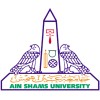
The Safety of Dapoxetine/Tadalafil Combination Therapy
Premature EjaculationErectile Dysfunction1 moreThe purpose of this study is to evaluate the safety and efficacy of Dapoxetine/Tadalafil 30/20 mg film-coated tablet in the treatment of men with premature ejaculation and erectile dysfunction.

Retinal Microanatomy in Retinopathy of Prematurity (BabySTEPS2)
Retinopathy of PrematurityRetinopathy of prematurity (ROP) is a disorder of development of the neural retina and its vasculature that can impact vision in vulnerable preterm neonates for a lifetime. This study tests high-speed optical coherence tomography (OCT) technology compared to conventional color photographs at the bedside of very preterm infants in the intensive care nursery, to characterize previously unseen abnormalities that can predict a need for referral for ROP treatment, or poor visual or neurological development later in life, up to pre-school age. Our long-term goal is to help improve preterm infant health and vision via objective bedside imaging and analysis that characterizes early critical indicators of ROP, and poor visual function and neurological development, which will rapidly translate to better early intervention and improved future care.

Premature Rupture Membranes and tPTL: a Personalised Approach (PROMPT)
Preterm Rupture of MembranesThreatened Preterm LaborPreterm birth (less than 37 weeks) affect approximately 8% of babies in the UK and is the worldwide leading cause of death in children under the age of 5. Subclinical infection affects approximately 50% of women giving birth before 32 weeks. Infection contributes to significant neonatal morbidity and mortality. Antibiotics such as erythromycin is currently used to treat women who present with preterm rupture of membranes. While this has shown short-term improvement in neonatal morbidity, it has not had any impact in reducing the perinatal mortality and also little effect on the health of the children at age seven. Some antibiotics such as co-amoxiclav has not shown to be effective in delaying delivery and some studies have shown that antibiotics increases rather than reduces the risk of cerebral palsy. Many women do not display signs of infection and the underlying bacteria is multifactorial (bacterial vaginosis, trichomoniasis, gonorrhoea, Chlamydia, ureaplasma, Group B streptococcal and E. Coli) and remains a diagnostic challenge. The only available clinical approach is to test the sample of amniotic fluid for bacteria and small case series have shown prolongation of pregnancy when accurately targeted antibiotic treatment is used. This research aims to prove that targeted antibiotic therapy results in a greater prolongation of pregnancy than standard management for women with preterm prelabour rupture of membranes (PPROM) and/or threatened preterm labour (tPTL). Women will be randomised to standard care versus BioFire directed antibiotic treatment in addition to standard care. Investigators will use the BioFire point of care testing to identify the presence of infection and identify with anti-microbial resistance genes the bacteria possess to guide the antibiotic treatment. To be certain that the presence of infection is detected the investigators will use PCR to test the amniotic fluid for IL-6 and white cell count.

Description and Comparison of Biological Vulnerability in Pre- Versus Full-Term Neonates in Urban...
Preterm BirthThe aim of the DenBalo study is to apply integrated multi-omics methods to examine the biological mechanisms underlying this vulnerability in preterm neonates in LMICs, with the ultimate goal of identifying targeted interventions to reduce morbidity and mortality in this high-risk population. The evidence generated from this project will ultimately help promote healthy pregnancies and the birth of healthy babies. To achieve this goal, three research objectives are proposed: To describe and compare gut microbiota, immune system and breastmilk components in pre- versus full-term neonates in urban Burkina Faso. To describe and compare the development of the gut microbiota, the immune system and breastmilk components during the first six months of life in pre- versus full-term infants in urban Burkina Faso. To investigate the relationship between the composition of the gut microbiota, the immune system and breastmilk components during the first six months of life in pre- versus full-term infants in urban Burkina Faso.

Regulatory PMS Study for Lucentis® in Patients With Retinopathy of Prematurity
Retinopathy of PrematurityThis study is an open-labeled, multicenter, single arm, observational post-marketing surveillance study under routine clinical practice with no mandated treatments, visits or assessments.

Nifedipine Plus Magnesium Sulfate Versus Magnesium Sulfate for Very Early Preterm Tocolysifs
Threatened Preterm LaborObjective: This trial is designed to compare between the effectiveness of nifedipine plus magnesium sulfate (MgSO4) and MgSO4 alone for tocolysis in women with threatened preterm labor. Patient Population: The population will include pregnant women at gestational age between 28 and 31 weeks who are 18 years old or older and have signs of threatened preterm labor. Study Design: This is a single-center, prospective, randomized controlled clinical trial. A total of 264 women pregnant between 28 and 31 weeks having threatened preterm labor will be enrolled and randomized into two parallel treatment arms. Patients in the group A will receive nifedipine plus MgSO4, while patients in group B will MgSO4 only. Treatment: All patients will be randomized on the day of enrollment. Patients with threatened preterm labor will receive the respective tocolysis in each group. All patients will receive corticosteroids for lung maturity according to the local protocol. Primary outcome: Number of women not delivered within 48 hours of starting tocolytic therapy. Secondary outcomes: perinatal mortality, a composite of adverse neonatal outcomes, birth weight, days on ventilation support, length of admission in neonatal intensive care, prolongation of pregnancy more than 7 days, delivery after 37 weeks of gestation, number of days till delivery, maternal mortality, maternal infection, and harm to mother from intervention.

The Psychological Experience of Pathological Pregnancy. Study of the Case of Premature Rupture of...
Preterm Premature Rupture of MembraneThis research investigates the impact of a hypnosis-based intervention in alleviating state anxiety in Preterm Premature Rupture of Membranes (PPROM). Our main hypothesis is that a two-session intervention can decrease anxiety for pregnant women with PPROM compared to usual care. This research also studies the impact of the experience of a PPROM during a pregnancy on several variables such as perinatal depression, pregnancy-related anxiety, bonding and childbirth experience, as well as control and pain perceived during chilbirth. Our hypotheses are that the experience of PPROM negatively influences these variables, and that this impact is alleviated by the hypnosis-based intervention for the experimental group.

Melatonin as an Analgesic in Preterm Neonate
Preterm Neonate AnalgesiaMelatonin (N-acetyl-5-methoxytryptamine) is a neurohormone secreted by the pineal gland with several important functions, including regulation of the circadian rhythms, and antioxidant and anti-inflammatory effects, accumulating evidence revealed that it also plays an important role in pain modulation through multiple mechanisms. The investigators aimed to evaluate the analgesic effect of melatonin during venous cannula insertion in preterm neonates by assessing Premature Infant pain Profile score (PIPP) before and 5 minutes after the procedure, and to demonstrate the significant relationship between procedural pain and Malondialdehyde (MDA), a well-accepted marker of oxidative stress through measuring MDA after 60 minutes of the procedure.

USCOM Parameters in Preterm Infants: Reference Ranges
Very Low Birth Weight InfantVery Preterm Maturity of InfantThe goal of this observational study is to learn about the feasibility of hemodynamic measurement by the UltraSonic Cardiac Output Monitor (USCOM) in very preterm or very-low-birth-weight infants. The main questions it aims to answer are: 1) establishing reference ranges for USCOM parameters in this specific population, 2) assessing the effect of patients' characteristics and other possible confounders on USCOM parameters, and 3) evaluating the short-term repeatability of the measurement. Participants will receive USCOM measurements on 3, 7, and 14 postnatal days.

Red Blood Cells From Umbilical Cord for Transfusion of Preterm Infants
InfantExtremely Premature2 moreThis study has been designed to demonstrate that red blood cell from umbilical cord blood (UCB-RBC) is a safe and available product for extremely preterm infants (EPI) transfusion and that transfusion of UCB-RBC is non-less effective than RBC from adult donor for the treatment of anemia of prematurity in this group of patients.
